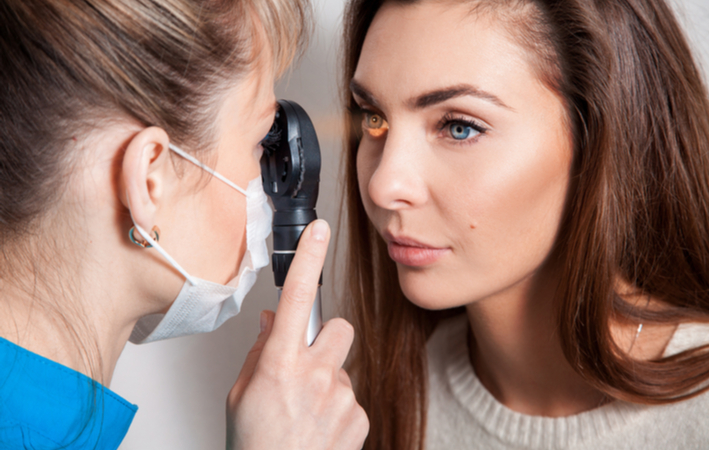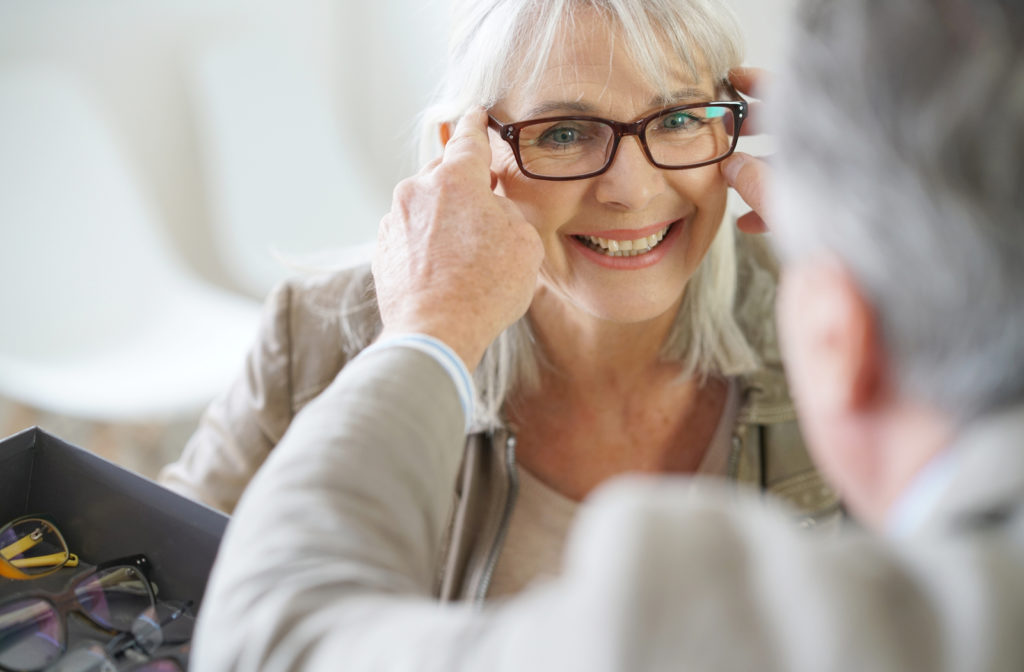Comprehensive eye exams are an important piece of eye care and maintaining healthy vision throughout your life. Whether it is for a child whose vision is only starting to develop, or an adult with developed eyesight, a comprehensive eye exam can help determine any current visual issues or emerging diseases as soon as they become apparent. At Total Vision Tierrasanta, our dedicated staff takes your eye care seriously — book an appointment today for an eye exam and our team will take care of all of your eye care needs.
The Process of a Comprehensive Eye Exam
Before Your Exam Begins
If it is your first time visiting us, we will begin by asking you questions about your general health history, family health history, and the current state of your vision. These questions will help our eye doctors know what kind of tests will need to be performed during your exam. Preliminary questions may include:
- Are you currently having any eye problems?
- Have you had eye problems in the past? If so, what were they?
- Do you wear glasses or contacts? Do they function well for you?
- Have you experienced any health problems in recent years?
- What medications do you take?
- Do you have any allergies? Medications, food, or other substances?
- Have you previously had eye surgery?
- Does anyone in your family have eye problems?
- Do you or anyone in your family have diabetes, high blood pressure, heart disease, or any health problems that can affect the whole body?
During Your Exam
Every basic eye exam usually involves at least one of these steps:
- Measurements of your visual acuity and a refractive assessment — these tests are done to see if you need prescription eyeglasses or contact lenses to correct your vision.
- Measurement of your eye pressure — in this test, you will be given a numbing drop in your eyes and possibly dilating eye drops; your eye doctor will then examine the back of your eye and retina. Examining the pressure in your eyes can help diagnose glaucoma.
- Evaluation of the health of your eyes — your eye doctor might use lights or imaging to evaluate the front structures of your eye and the inside of each eye while looking for potential diseases or other abnormalities.
After Your Exam Finishes
Once your exam concludes, you will have a dialogue with your eye doctor about the results of your testing, including:
- An overall assessment of your vision
- Your current risk of eye disease
- Preventive measures you can take to protect your eyesight.
- Potential treatment plans or corrective visual aids for any emerging vision issues or diseases.

What Can Your Eye Doctor Assess During an Eye Exam?
Your Visual Acuity
This is the most commonly known test that is administered during an eye exam. Your eye doctor will have you read an eye chart set a certain distance away while covering one eye. You will read letters on the chart in a downwards pattern, with each row of letters getting smaller and smaller. Once you cannot read the letters anymore, the test concludes.
By utilizing this test, your eye doctor will be able to determine how clear your vision is overall, and how well you can see objects at certain distances.
Refraction Measurements
Lens power in prescriptions needs to be discovered through refraction measurements. An instrument called a phoropter may be used to measure the refraction of your eyes. The test and use of this device involve a series of lenses being held in front of your eyes. While this is happening, your eye doctor will measure how these lenses focus light on your eyes using a retinoscope. The lens power that suits your needs will be chosen based on your input of what lenses produce the clearest image to you, and possibly an automatic measurement taken by your eye doctor during testing.
Slit-lamp Examination
A slit lamp will be used to examine your eyelids, lashes, cornea, iris, lens, and fluid chamber between your cornea and iris. The device is made up of a microscope that magnifies and illuminates the front portion of your eyes with a line of light. Typically this test is used to examine the front structures of the eye and discern if there are any eye diseases present.
Your Peripheral Vision
The loss of vision near the edges of your visual field can be a symptom of eye diseases like glaucoma. By testing your peripheral vision and your field of view, your eye doctor will be able to discover vision issues you may have been previously unaware of.
Your Eye Movement
Through a test called ocular motility, your eye doctor can evaluate the movement of your eyes. This includes seeing if your eyes align properly when moving, and seeing if your eye muscles are working as they are intended.
Your Retina and Optic Nerve
If you choose to, you can receive dilating eye drops during your exam so your eye doctor can evaluate the back of your eye. By widening your pupils through dilation, your eye doctor will be able to get a better look at your retina and optic nerve inside your eye and survey for any emerging issues or signs of disease.


